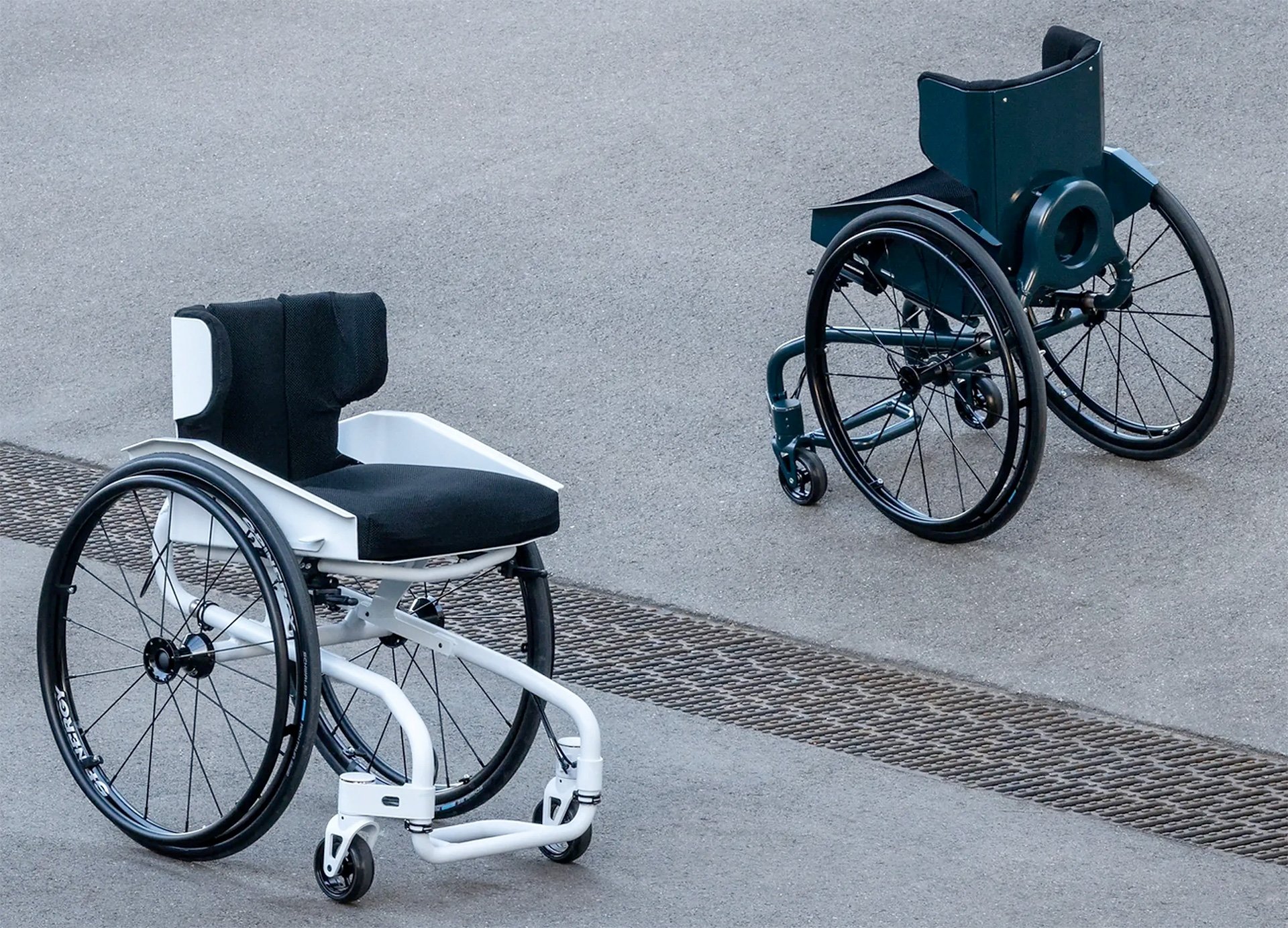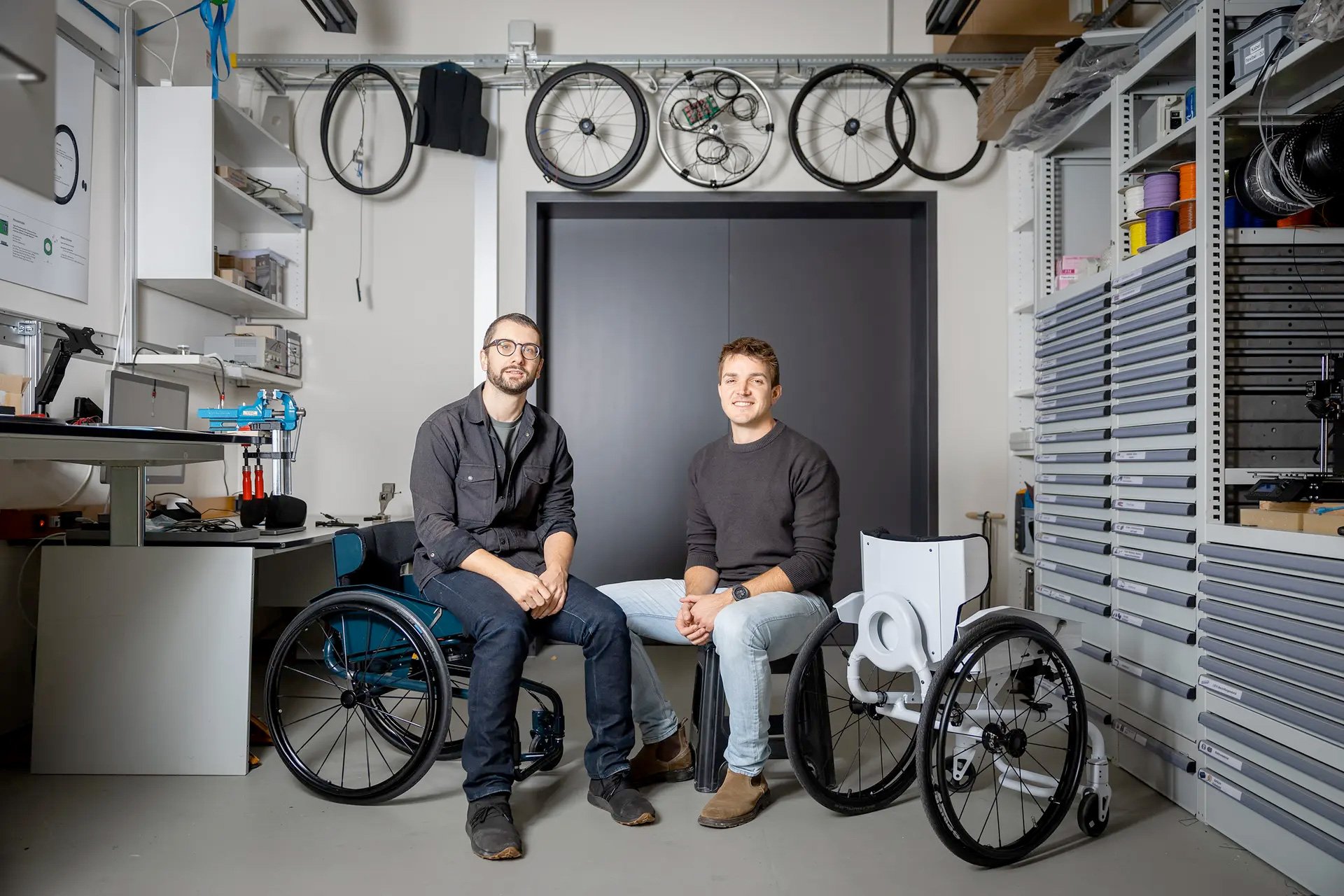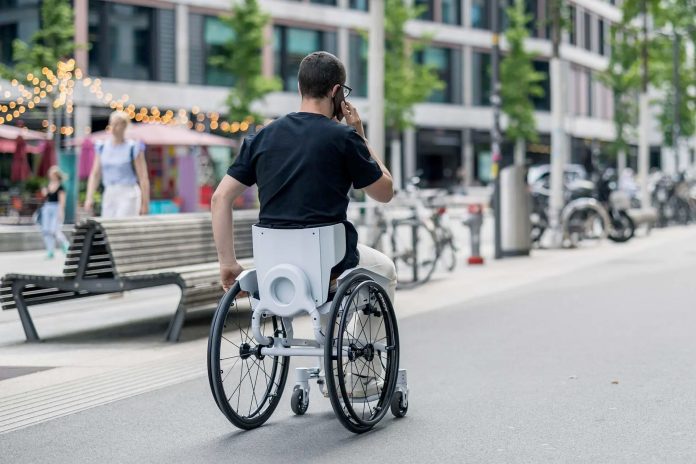Navigating traditional wheelchairs requires users to employ considerable arm strength and coordination to steer, often by braking one wheel while propelling the other. This can be exhausting and limits the ability to multitask.
A new wheelchair designed by Reto Togni and Stefan Villiger at ETH Zurich’s Laboratory for Movement Biomechanics reimagines the process, allowing users to steer by leaning on a moveable backrest—a development that could transform wheelchair mobility for many.
The primary problem with traditional wheelchair design lies in the two front caster wheels, which, like the wheels on a shopping cart, passively swivel. Although they enable pivoting, they lack fixed directionality, which poses an issue, particularly on sloped surfaces.
When moving along an uneven path, for instance, the caster wheels naturally veer downhill. This unintended drift requires the user to counter-steer repeatedly, using extra energy that could otherwise be directed toward forward movement. The current system also places strain on the shoulders, arms, and hands, increasing the physical toll over time.

In contrast, this innovative wheelchair design eliminates the need for continuous counter-steering by integrating a backrest that the user tilts left or right to change direction. Instead of relying on complex electronics, this design is purely mechanical, allowing for intuitive, hands-free navigation. When the user leans on the backrest to the right or left, it triggers a linkage mechanism that aligns the front wheels in the chosen direction, allowing them to hold their position rather than wavering. Braking, however, remains the same as in traditional wheelchairs, performed by gripping and slowing the rear wheels.
The backrest-based steering approach provides two main benefits: greater efficiency and flexibility in multitasking. With the steering system managed by the backrest, users can reserve one hand for propulsion while using the other to handle a smartphone, coffee cup, or any other item they might need to carry.

“There are still moments when we’re practically swept off our feet by the simplicity of our idea – and the many advantages it offers,” shares Togni, capturing the sense of satisfaction that has come from realizing the system’s potential.
To evaluate this innovation, Togni and Villiger enlisted 29 volunteers to navigate an obstacle course, first in a standard wheelchair and then in their newly designed model. With sensors placed on the rear drive wheels, researchers measured the energy expenditure across six runs. Results indicated that participants exerted significantly less energy when using the backrest-steered wheelchair.

In addition to reducing energy use, the new wheelchair design allowed users to move faster along straight paths with less effort. The only slight disadvantage of the new system is its reduced ability to pivot in place—a feature the designers addressed by adding a lever. This lever disengages the steering system, allowing the front wheels to swivel freely as needed.
Togni and Villiger, who now plan to commercialize their design through their ETH Zurich spinoff company Versive, anticipate bringing the product to market by mid-2027. They aim to make this technology available to a broader audience, with potential applications across various settings that require reliable, user-friendly mobility solutions.
Watch the wheelchair in action in the video below.
Source: ETH Zurich



